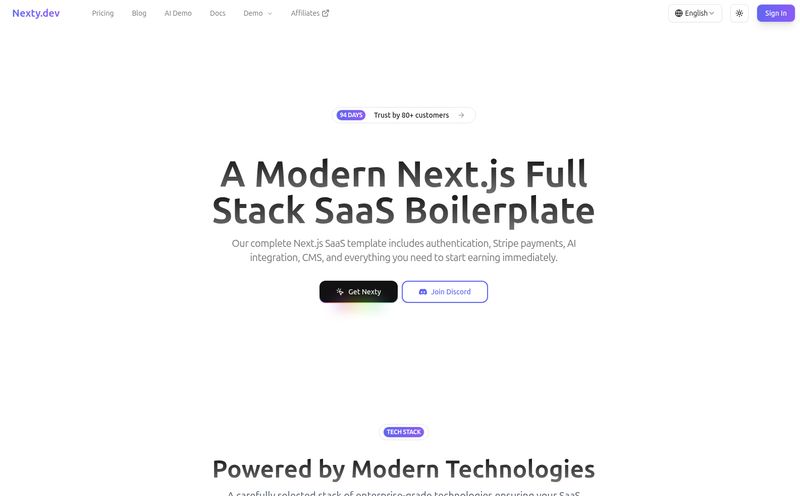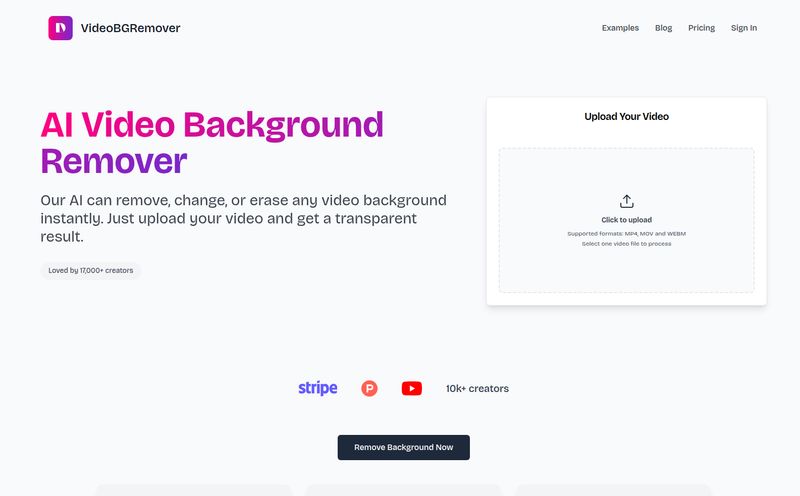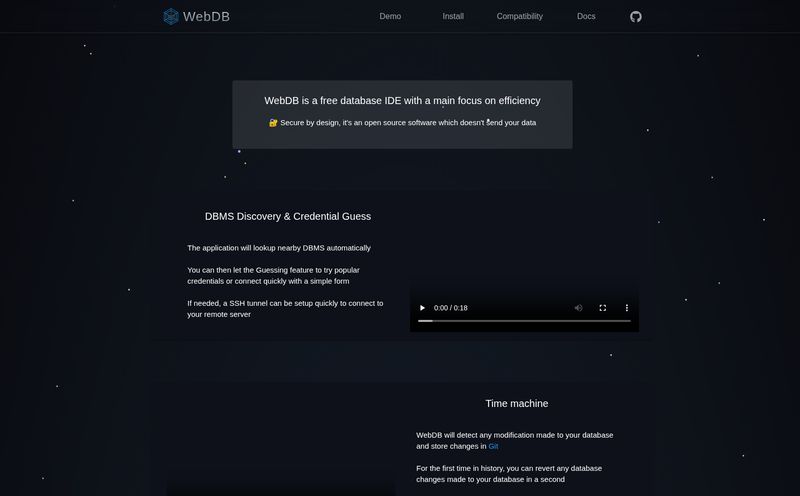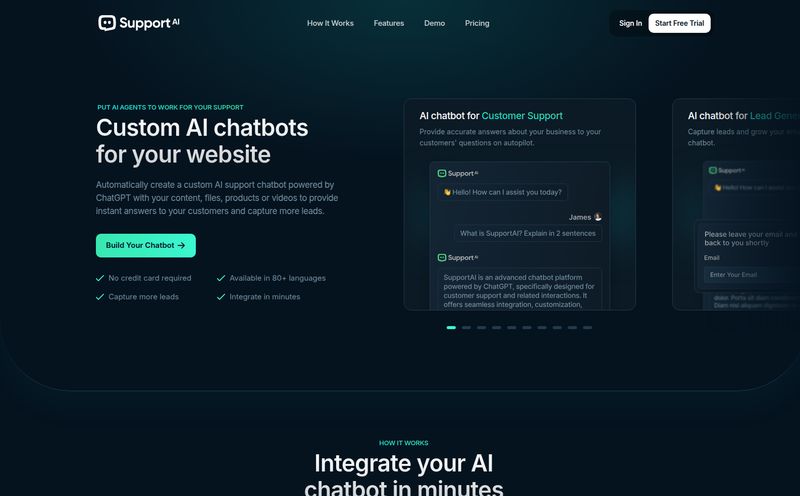I’ve been in the SEO and digital marketing game for a while. Long enough to see trends come, go, and then come back again with a new “AI-powered” hat on. One of the stickiest has been biometric tech, specifically face recognition. Ten years ago, it was the stuff of spy movies. Today, it’s unlocking your phone, tagging your friends on social media, and, for developers, it’s become a surprisingly accessible tool.
But let's be real. Integrating this kind of tech into a project can be a massive headache. You either spend months (and a small fortune) trying to build it yourself, or you hunt for an API that doesn't feel like it was designed in 1998 and runs on a hamster wheel. So when I stumbled upon Luxand.cloud, I was intrigued but skeptical. Another company promising the moon? I had to take a look under the hood.
What is Luxand.cloud, Really?
Okay, let's cut through the marketing fluff. Luxand.cloud is a cloud-based Face Recognition API. In plain English, it’s a toolbox for developers that lets you plug powerful facial analysis into your own web or mobile applications without having to become a machine learning PhD. You send it an image; it sends you back data. Simple as that.
We're talking about identifying people, checking if a person is real and not a photo, guessing their age and gender, and even getting a read on their emotions. It’s all done via their servers, which means you don't have to manage the heavy infrastructure. It’s like ordering a gourmet meal instead of growing the vegetables, raising the cattle, and building the oven yourself. I, for one, prefer to just eat.
The Core Features That Actually Matter
Any API can give you a laundry list of features. What I care about is what works and what's actually useful. Luxand seems to have focused on the right stuff.
It's More Than Just a Pretty Face (Recognition)
The main event, of course, is the face recognition. They claim a 99.73% accuracy rate. Now, I've seen accuracy stats thrown around like confetti at a parade, but this one is up there with the industry giants. The real magic isn't just recognizing a face, but doing it fast. They boast a 60ms recognition time. That's... insanely fast. That's the difference between a user experience that feels instant and one that makes you question your life choices while a loading spinner taunts you.
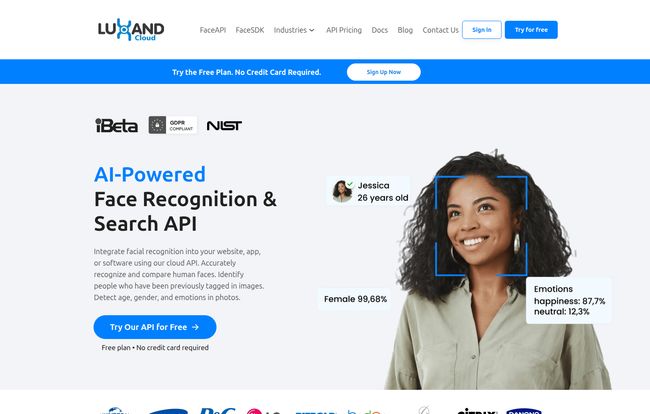
Visit Luxand.cloud
Liveness Detection: Beating the Fakers
This is a big one for me, and it’s something a lot of people overlook. What’s to stop someone from just holding up a photo of you to fool the system? That's called a spoofing attack, and it’s a genuine security risk. Luxand’s API includes liveness detection, which is designed to verify that the face it's seeing is a real, live person. For any application involving security, check-ins, or identity verification, this isn’t a nice-to-have; it's a necessity.
Beyond Recognition: The 'Extra' Stuff
This is where it gets fun. The API also handles:
- Age and Gender Recognition: Incredibly useful for marketing analytics. Imagine a retail store with a smart display that can gather anonymous demographic data on its customers to tailor promotions.
- Emotion Detection: Okay, this can feel a bit sci-fi, but think about the potential for user feedback. Is a user frustrated with your app's checkout process? Their face might just tell you.
- Face Similarity and Cropping: It can also find similar faces in a database or just neatly crop faces out of a larger image. These are the little utility features that save developers hours of tedious coding.
A Look at Real-World Uses
So who is this actually for? The website lists a few industries, and they make sense. In Finance, it’s for secure logins and identity verification. For Marketing, it’s all about those audience analytics I mentioned. Education can use it for proctoring exams or taking attendance. And in Retail or Hospitality, you can imagine personalized experiences or streamlined check-ins. It's a surprisingly flexible tool.
The Developer Experience: Getting Your Hands Dirty
An API is only as good as its documentation and ease of use. I'm not a full-time coder anymore, but I can still tell a good API from a bad one. Luxand seems to get it. They provide support for a bunch of modern languages—Python, Java, C#, NodeJS, Ruby, Go, and more. This isn't some old-school SOAP API that only a wizard can decipher; it's a modern REST API designed for developers who want to get things done yesterday.
The whole thing is presented as a turnkey solution. You’re not just getting raw algorithms; you’re getting implemented use cases that you can integrate fairly quickly. This lowers the barrier to entry significantly, which I always appreciate.
The Big Question: What’s the Catch?
Alright, it can't all be sunshine and roses. Every solution has trade-offs. Firstly, it’s a cloud API, which means you’re reliant on their servers and an internet connection. If your application needs to work completely offline in a submarine, this ain't it. Although, they do mention an on-premise solution if you contact them, which is a nice touch for enterprise-level needs.
Secondly, API requests cost money. This is a pay-as-you-go world. You’re not buying software; you’re subscribing to a service. For a small project, this is perfect. For an app with millions of users, you’ll need to do the math carefully. Which brings us to the price tag.
Breaking Down the Luxand.cloud Pricing
I appreciate transparent pricing. I really do. There’s nothing worse than a “Contact Us for a Quote” button when you just want to know if you can afford the thing. Luxand lays it all out pretty clearly on their pricing page.
Here’s a simplified breakdown:
| Plan | Price/Month | API Requests | Faces in Storage | Best For |
|---|---|---|---|---|
| Start | $9 | 1,500 | 500 | Hobbyists & Small Prototypes |
| Lite | $19 | 5,000 | 1,500 | Early-Stage Startups |
| Basic | $39 | 10,000 | 2,500 | Growing Applications |
| Pro | $99 | 200,000 | 6,000 | Established Products |
| Business | $249 | 500,000 | 18,000 | High-Volume Operations |
| Enterprise | $1949 | 2,500,000 | 54,000 | Large-Scale Enterprise |
Note: Pricing details are based on information available at the time of writing. Always check their official site for the most current numbers.
The best part? Every plan starts with a free trial and you can cancel anytime. This takes the risk out of the equation. You can kick the tires and see if it works for your project before committing a single dollar. That shows confidence in their own product, which I respect.
My Personal Take: Is It Worth It?
So, what’s the final verdict from a jaded industry guy? I’m genuinely impressed. Luxand.cloud seems to have found a sweet spot. It’s powerful enough for serious applications, with high accuracy and critical features like liveness detection. But it’s also accessible, with straightforward pricing and a developer-friendly approach.
It’s not trying to be a one-size-fits-all behemoth. It does face recognition and analysis, and it does it very well. For a developer or a company that wants to add advanced biometric features without a massive R&D budget, this looks like a fantastic option. It’s a classic build vs. buy scenario, and Luxand makes a very compelling case for "buy".
Frequently Asked Questions
- How accurate is Luxand's recognition?
- They advertise a 99.73% accuracy rate on their website, which is exceptionally high and competitive with the top services on the market.
- Is it hard to integrate the API?
- From what I've seen in their documentation, it's designed to be straightforward. As a REST API with support for many popular programming languages like Python and JavaScript, a developer with some experience should be able to get a proof-of-concept running quite quickly.
- Can I use Luxand.cloud for security purposes?
- Yes, absolutely. The inclusion of Liveness Detection makes it a strong candidate for applications that require secure identity verification, such as logins, access control, or preventing fraud.
- What happens if I go over my monthly API requests?
- Like most API services, you'd likely need to upgrade to the next pricing tier. It’s best to check their specific terms, but the tiered structure is designed to scale with your usage.
- Is there an on-premise version available?
- The main offering is the cloud API, but their website mentions an on-premise solution is available. You would need to contact their sales team for details, as this is typically an enterprise-level feature.
Wrapping It Up
In a field that can be overly complicated and intimidating, Luxand.cloud feels like a breath of fresh air. It's fast, accurate, and built for people who just want to create cool things. Whether you're building the next big social app, a secure check-in system for your business, or just experimenting with what's possible, it’s definitely a tool worth having in your back pocket. Give the free trial a spin; you've got nothing to lose and a whole lot of powerful tech to gain.
Reference and Sources
- Luxand.cloud Official Website: https://luxand.cloud/
- Luxand.cloud API Pricing: https://luxand.cloud/pricing
